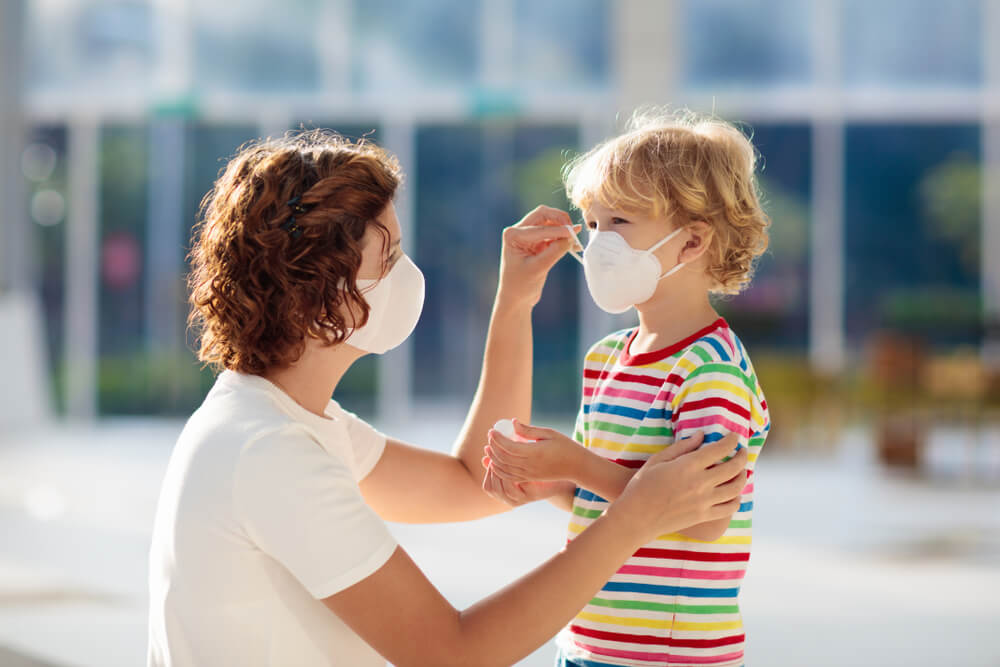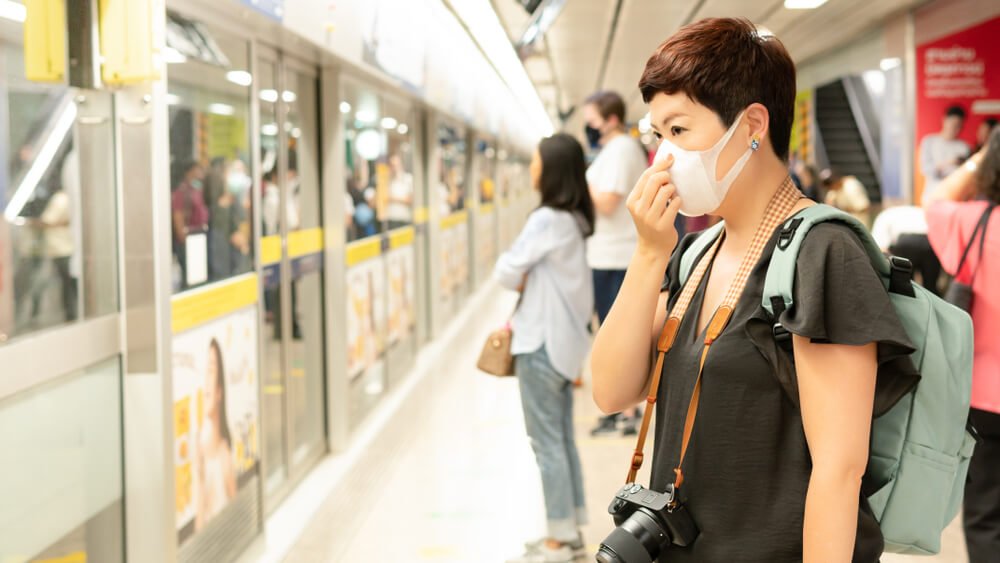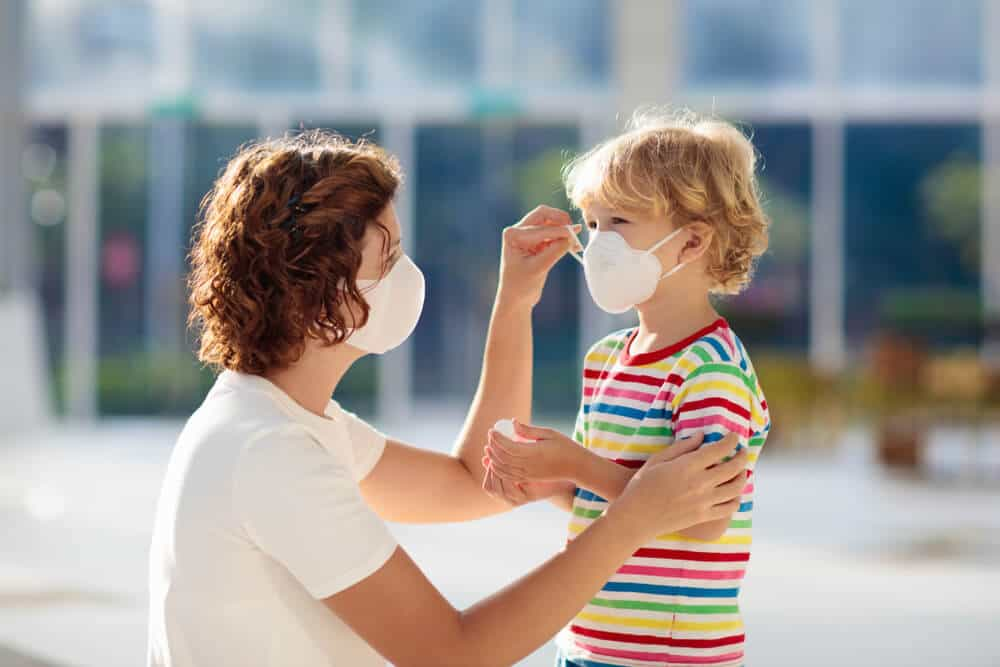The coronavirus epidemic, which broke out in Italy about two weeks ago and quickly became a global pandemic, has forced millions of people to protect their mouths, noses, and eyes from potential infection. The hunt for protective masks —of all types—has become a daily occurrence in our country. Extremely difficult to find commercially, whether due to depleted supplies or exorbitant prices, they are not considered suitable, or even useful, for everyone. In reality, not everyone NEEDS to wear them . Masks are of no use to healthy people . 
Who MUST wear protective masks
They must be worn by coronavirus patients and their caregivers , i.e., healthcare workers or those directly assisting the patient. Masks can also protect certain groups at risk of contagion, such as immunocompromised individuals or cancer patients , who are generally more exposed to these infections. In red zones, masks can certainly help those who work in direct contact with strangers: they are recommended for taxi drivers or public office staff, for example. This mandatory requirement takes into account the guidelines issued by the WHO on February 27 , which urge the public to use personal protective equipment wisely against the coronavirus epidemic.
Precautions for HEALTHY people
For healthy people, those theoretically not in contact with infected people, the personal hygiene recommendations that have been in place for several days now apply : wash your hands, avoid touching your face, maintain a distance of at least one meter, and try not to leave your home . The only exception, according to a recent announcement by Civil Protection Chief Angelo Borrelli , concerns cases where there is " no possibility of maintaining a distance of one meter ." In that case, the Civil Protection Department recommended wearing masks. It's important to remember, once again, that masks should not be used as an excuse to go out and meet other people , where contact has been limited. Borrelli's recommendation would be directed at those who, for work reasons, are unable to maintain a safe distance.  It's also worth remembering that any mask should be considered strictly disposable . If you don't change it frequently, breathing creates a microclimate that can favor the proliferation of the virus upon contact with the mucous membranes of the mouth, nose, and eyes. For all other cases, if you don't have a mask, covering your face with a scarf, foulard, or snood is sufficient.
It's also worth remembering that any mask should be considered strictly disposable . If you don't change it frequently, breathing creates a microclimate that can favor the proliferation of the virus upon contact with the mucous membranes of the mouth, nose, and eyes. For all other cases, if you don't have a mask, covering your face with a scarf, foulard, or snood is sufficient.
Types of Masks
There are 3 main categories of protective masks:
- Personal Protective Equipment (PPE – FFP)
- Medical Devices or medical masks (DM)
- DIY masks
1 – PPE
PPE on the market must bear the CE mark. According to EN 149, filtering masks are classified as FFP1, FFP2, and FFP3 , with increasing filtering efficiency. FFP1 masks, inadequate for the virus, are called "anti-dust" masks. The recommended masks for those who need protection from the virus are FFP2 and, even better, FFP3. Worn by an infected person, they are simply a waste.
- FFP1 masks = 78% efficiency
- FFP2 masks = 92% efficiency
- FFP3 masks = 98% efficiency
2 – DM: Medical or surgical masks
Medical masks (DM) are designed to prevent the spread of the virus in the surrounding atmosphere. We're all familiar with them, in their blue and green variants, because they're used in hospital settings. They can, therefore, prevent the wearer from spreading the infection, but they don't adequately protect the wearer from contagion from others (especially due to their imperfect fit to the face). "The UNI EN 14683 standard identifies three types of masks, Type I, Type II, and Type IIR , which differ in bacterial filtration efficiency of 95%, 98%, and 98%, with protection against the penetration of splashes of bodily fluids." After 2-3 hours of use, these masks should be replaced as they lose their effectiveness when they become damp. A special mention should be made of disposable masks with so-called "filters," which are essentially valves that make breathing easier by reducing the heat generated by breath. The valves “expel” the virus outside, while they only protect against entry.
3 – DIY Masks
As mentioned, given the large number of masks intended for the sick and specific categories of workers, and given the shortage on the market, the purchase and distribution of these devices have been limited . How to do it? Here's a proposal from pediatrician Alberto Ferrando. A simple video tutorial published on his blog showed how to make a DIY mask in just a few minutes. Baking paper, two rubber bands, and a stapler: these are the few simple tools needed to make a protective mask at home. Ferrando says: "It's also a useful way to distract ourselves a bit… In these days when we're all at home, let's make them together with our children. It will also help pass the time with a manual activity, which will also develop children's hand-eye coordination." The demonstration on TV instead came from Barbara Palombelli , who during her show created the pediatrician's "project" in just a few steps.
You may also like
The High Rent Dilemma for Italian Students: Challenges and Solutions
The issue of high rent prices in Italy presents a daunting challenge for university students, limiting their access to suitable living accommodations. This article explores the multifaceted causes of this problem, examines its impacts on students, and proposes a variety of solutions to alleviate the financial burden on students, including governmental initiatives, university housing projects, and community-based approaches.
Decorating Your Home Without Waste: Practical Tips for the Living Room and Bedroom
Decorating your home can be an expensive undertaking, but with the right tools, you can create welcoming and functional spaces without breaking the bank. In this article, we explore practical tips for decorating your living room and bedroom while saving money, with an eye on design and quality.
The Best Sun Loungers of 2025
Exploring the most popular sun loungers of 2025, this article delves into the technical features, pros and cons, pricing, and innovative highlights, providing a detailed comparison to help consumers make an informed decision.
Air Fryers: A Kitchen Revolution or Just a Passing Fad?
Air fryers are gaining popularity as a healthy and versatile cooking tool. But do they really live up to expectations or simply a passing fad? This article explores the technology, benefits, limitations, and expert opinions on these appliances.
